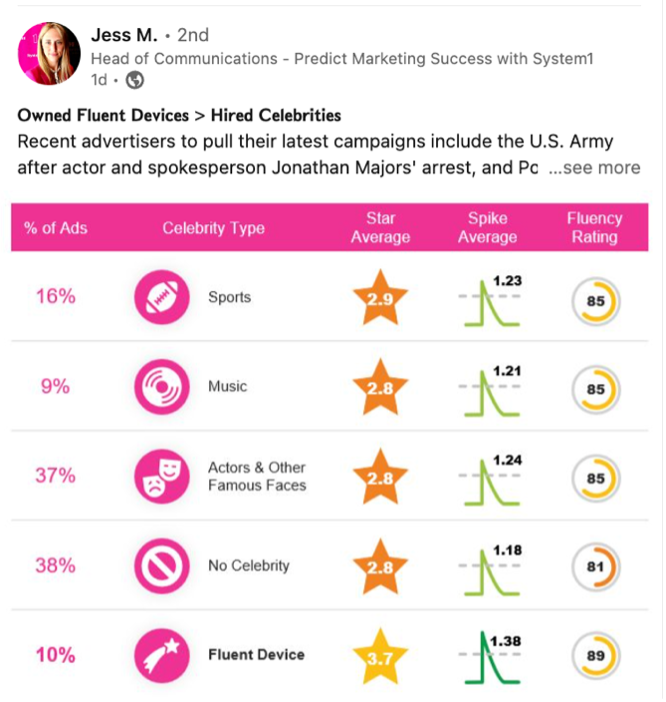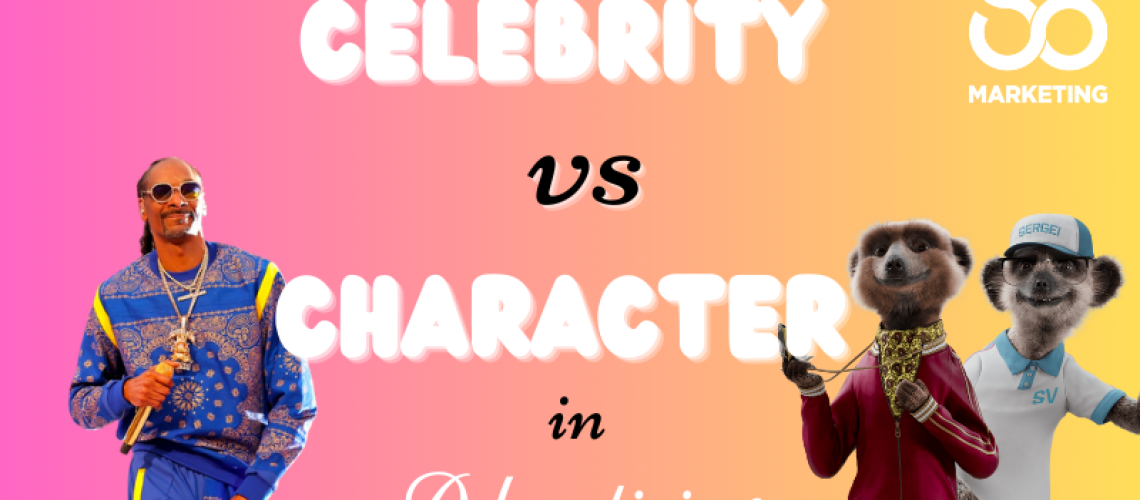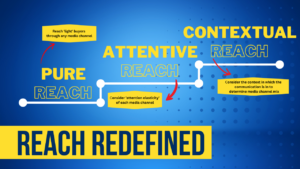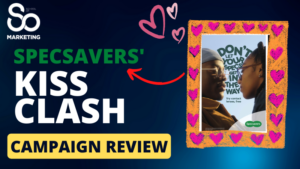When building distinctive brand assets, there is nothing like a ‘face’ to bring a brand to life. Celebrity endorsements have existed in advertising for as long as there has been advertising!
Of course, the modern version of this form of advocacy is the world of influencers that stretch from mega-stars to middle-class moms, each with charm and a loyal following.
Examples are plenty from Pepsi’s latest Super Bowl campaign featuring Ben Stiller and Steve Martin going head to head with each other.
It’s a great example of Pepsi twisting convention and using two A-list celebs in their campaign.
The pair actually compliment each other and create even more stand out for the brand.
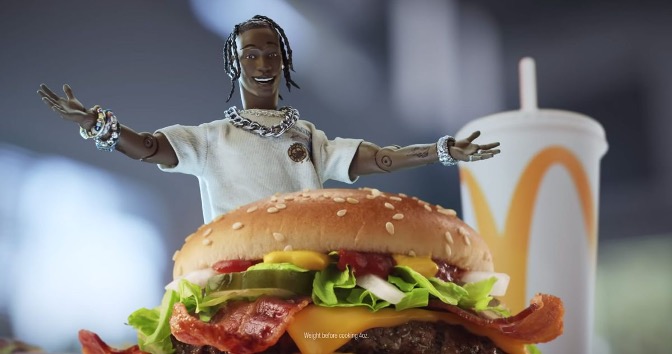
To Mcdonald’s sporting, Travis Scott’s favourite meal became quite the whopper of a campaign.
This meal includes the Travis Scott Burger, medium fries with BBQ sauce, and a medium Sprite.
It was so popular that the meal sold out in numerous stores across the States.
We have even seen the emergence of Tik Tok star, Mufasa, score big with the latest webuyanycar adverts, which turned into a national movement.
‘Just Sold My Car’ is a brand-new TV and radio campaign from webuyanycar. Its mission is to spread the word about how simple it is to sell your car to the brand.
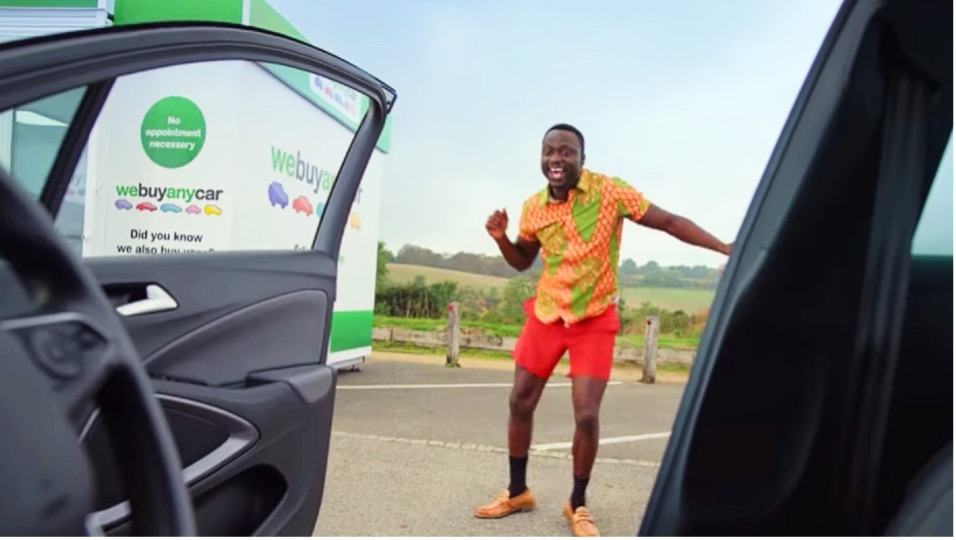
Celebrity endorsements are taken to the next level when you maintain their on-screen character in the advert.
This brings an added layer of familiarity to the context. For instance, this is Direct Line’s approach with their latest campaign with Transformer characters Bumblebee and Optimus Prime.
We have also seen massive success with Ryan Reynolds championing many brands, several of which have now achieved unicorn status.
So much so he has had a string of recent successes, from the recent sale of Mint, his mobile network for a cool $1.3 billion or his alcohol brand Aviation Gin for around $600 million.
He has even swung his local Wrexham FC team a chance to play Manchester United in a friendly game.
I’m pretty sure it would have not happened if he was not at the helm.
I love the funny advert he put out with Sir Alex Ferguson to announce the match.
It shows that he has a formula that he deploys time and time again to significant effect.
The logic and evidence for using celebrities are well documented. They grab attention, build familiarity, create memorability and earn trust.
Watch-outs
However, as much as there is fanfare, there is probably an equal amount of controversy that follows this approach. An endless string of celeb-endorsed campaigns has turned south on the back of unacceptable shenanigans.
From Kayne to Tiger Woods and Johnny Depp to Kate Moss, we probably all remember the moments these celebrities fell from grace, losing millions in brand endorsements.

Not to mention celeb brand promiscuity is rife. On average, A-list celebrities have as many as ten brand endorsements simultaneously! Worse still when a star hangs up their boots with a brand, only to promote a competitor product shortly after. Scandalous!

Fluent devices
An alternative to celebrities is using other, what the industry terms, fluent devices. This is where you create your character that becomes a mainstay for your brands and wider comms.
It’s what First Direct recently did with their skunk character, or perhaps the most well-known character in the UK ad scene is the Meerkat family from Compare the Market.
But, of course, fluent devices do not always have to be animated characters, as demonstrated by the lovable singing man in the Compare adverts.

Research from System 1 shows the impact and effect of fluent devices. For example, we can see that the long-term campaigns that include fluent devices have increased market share gains and overall profit.
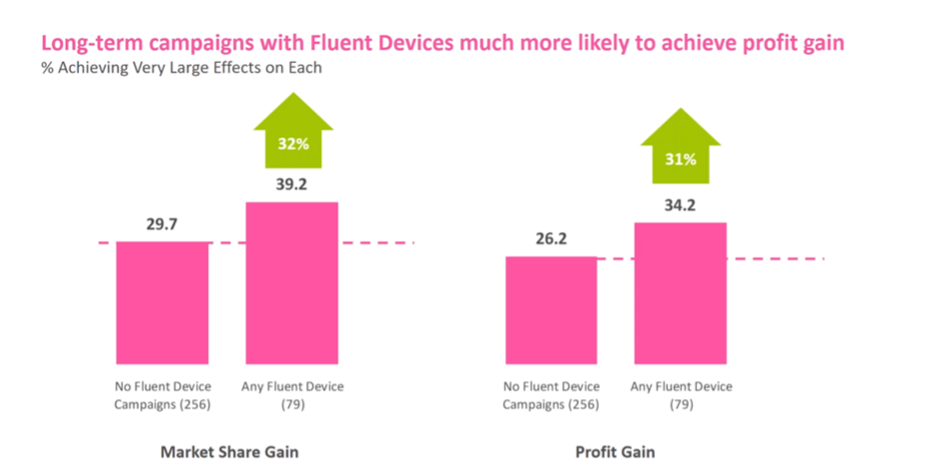
The advantage of using fluent devices is that they will likely endure long periods, and you don’t get caught up in licensing fees and endorsement costs. For instance, the Travis Scott promotion is said to have cost Mcdonald’s around $ 20 million. While the recent Adidas and Beyoncé partnership that was terminated netted Beyoncé $20 million yearly.
So, which is it?
There is no correct answer, and each has its merits and drawbacks. However, it’s worth noting that System 1 recently completed a study examining Super Bowl ads featuring celebrities vs fluent devices.
They found that in 62% of cases, adverts featured a star, whilst, in 32% of cases, they used a fluent device.
What they found according to their head of communications, “there’s no automatic advantage to adding a famous face.
Meanwhile, Fluent Devices, which are recurring characters and scenarios, are much more effective when used in Super Bowl ads, scoring an average of 3.7 stars.”
It certainly adds weight in favour of fluent devices for marketers to use. But the choice is yours!
